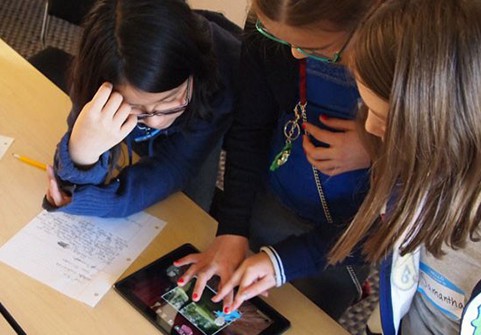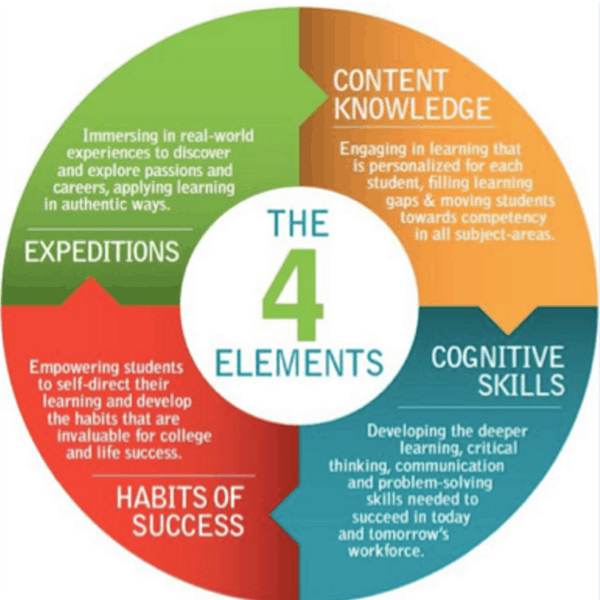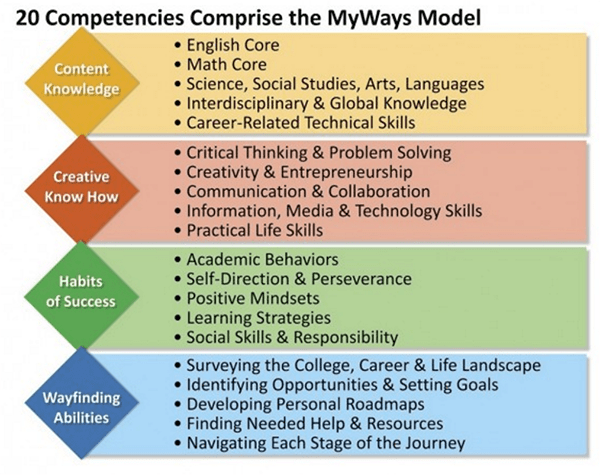What to Look For: A Shared Vision of Powerful Learning

This blog is part one in a four part series–sponsored by Pearson Education–focused around the key indicators of success in a digital learning program. Throughout the series we will give details about the four “look fors” in online and blended environments.
Making the #ShiftToDigitalEd benefits your school and your students in a variety of ways: it unlocks the potential of high engagement personalized learning, it extends learning time and options, it powers professional quality work products, and boost collaboration.
We’re living through a profound shift in human development: a shift from print to digital, from cohort to individual, from year end test to continuous feedback, from time to learning. It’s a shift from passive learning–teach it, turn it in, and test it–to active learning–playlists, projects, presentation, publications, and portfolios. The shift includes new broader outcomes–real measures of college and career readiness including creativity, critical thinking, collaboration, and habits of success.
Broader aims and powerful learner experiences means a new list of things to “look for” in a learning environment. Over the next couple of weeks we’ll be sharing the four “look fors” in digital learning environments.
Evidence of a Shared Vision
This first sign of success is a shared vision. A graduate profile and a picture of learning should guide planning and implementation. Your vision should answer two key questions:
- Aims: What should young people know and be able to do?
- LX: What powerful learning experiences will help develop the desired knowledge, skills and dispositions?
Community conversations should consider how the world is changing, how jobs are changing, and how civic participation is changing. What’s really important for graduate success?
Following are six systems getting it right:
- Houston ISD worked with the community, businesses and HigherEd partners to develop a Global Graduate Profile that defines the knowledge, skills and characteristics they believe are critical for student success. The district uses the goals set in the graduate profile to properly align their district and PowerUp initiatives. “We are working together to use technology so that our classrooms remain student-centered and students become critical thinkers, problem-solvers, and leaders — all traits of the Global Graduate” said former superintendent Terry Grier.
- Marion City Schools recently defined and realized their personalized learning vision. A discussion with teachers helped determine their understanding of personalized learning which then led to identifying the differences between teaching for achievement and teaching for growth. MCS also partnered with their community to create a “Portrait of a Graduate”. This vision was built upon what a graduate should know and be able to do based on the needs of the community and given what the world may look like in a few years.
- Highline Public Schools (south of Seattle) developed a strategic plan that includes a community vision for student success and strategies to get there. At Highline all students are “known by name, strength and need, and graduates ready for college career and citizenship.” A few of their goals for students include core subject mastery by grade 3, success in algebra, graduating students prepared to chose and be successful in their future, graduate students who are bilingual/biliterate and graduate students who are tech-savvy/tech-literate. Highline’s four pillars — equitable access, results focused professional learning, strong family partnerships and being a culturally responsive organization — support their instructional vision and guide their professional practices.
- Danville Schools (south of Lexington) demonstrates that Good Schools Start With Good Goals. Carmen Coleman (now working with Gene Wilhoit, National Center for Innovation in Education) led community conversations that resulted in a Deeper Learning agenda. See the the Danville Diploma for a compelling vision of opportunities and outcomes.
- Aiken Virtual Program serves a diverse population and offers anytime, anywhere learning for students who have challenges that make a brick and mortar school schedule difficult. AVP’s vision is to serve their diverse population and enable personalized learning in a 21st-century learning environment that prepares students for future success. In 2012 AVP implemented Pearson’s digital learning solution GradPoint, allowing teachers to differentiate instruction with multiple learning pathways and allowing students work at their own pace while taking ownership over their learning.
- Denver Public Schools has created a powerful picture of what each student should capable of which includes– actively engaging in his or her development, growth and goals, working with teachers to co-create customized learning plans to reach content mastery leveraging his or her strengths and accessing engaging and standards-aligned curricula that supports academic, social and emotional needs. The DPS Team believes, “Effective personalized learning will create lifelong learners that graduate prepared for success in college and career.”
Expert Visions
Several national organizations offer useful summaries of student learning outcomes
- New Tech Network, a national network of project-based schools, focuses on include Collaboration, Oral Communication, and Agency, in addition to Knowledge and Thinking and Written Communication.
- Summit Public Schools, an innovative California network of secondary schools, defines student outcomes as content knowledge, cognitive skills, habits of success, and expeditions.

- NGLC developed MyWays, a synthesized definition and toolset to map a student’s current readiness and then plan to attain that deeper/richer definition of success. Building on work by David Conley, Summit, and others, MyWays surfaced 20 competencies arranged in four general areas: Content Knowledge, Creative Know How, Habits of Success and Wayfinding.

There are a number of national organization that offer useful learner experience advice:
- Clayton Christensen Institute: Blended learning involves leveraging the Internet to afford each student a more personalized learning experience, including increased student control over the time, place, path, and/or pace of learning. The definition of blended learning is a formal education program in which a student learns:
- at least in part through online learning, with some element of student control over time, place, path, and/or pace;
- at least in part in a supervised brick-and-mortar location away from home;
- and the modalities along each student’s learning path within a course or subject are connected to provide an integrated learning experience. (Watch this video to learn more.)
- The Learning Accelerator: Blended learning is the strategic integration of in-person learning with technology to enable real-time data use, personalized instruction, and competency-based progression. (See their framework here.)
- iNACOL: Personalization includes student agency, differentiated instruction, immediate instructional interventions, on-demand supports, flexible pacing, individual student profiles, deeper learning and problem solving to develop meaning, frequent feedback from instructors and peers, standards-based, world-class knowledge and skills, anywhere, anytime learning, and performance-based assessments.
- Highlander Institute: blended learning is:
- The strategic integration of teaching, technology, and data to increase personalization, engagement, and mastery of all essential skills for all students.
- A movement away from teacher-centered lecturing and testing to a student-centered learning environment in which students of all ages have increased choice over the path, pace, time, and place that their learning happens.
- A spirit of learning that creates space for innovation, experimentation, and design thinking for educators and students to incorporate 21st century and real-world skills.
Have a powerful way to describe what grads should know and be able to do? Have a useful description of the desired learner experience? We want to hear from you! Tweet to #ShiftToDigitalEd, #IMadeTheShift, or show us your vision statement in action on Instagram #DigitalImpact
This blog series is written as part of Pearson’s Shift to Digital Learning Campaign. Learn how Pearson supports the digital transformation of education with online and blended learning, elearning, and digital solutions to improve results, by checking out their Shift to Digital Campaign page and:
Stay in-the-know with all things EdTech and innovations in learning by signing up to receive the weekly Smart Update. This post includes mentions of a Getting Smart partner. For a full list of partners, affiliate organizations and all other disclosures please see our Partner page.







0 Comments
Leave a Comment
Your email address will not be published. All fields are required.